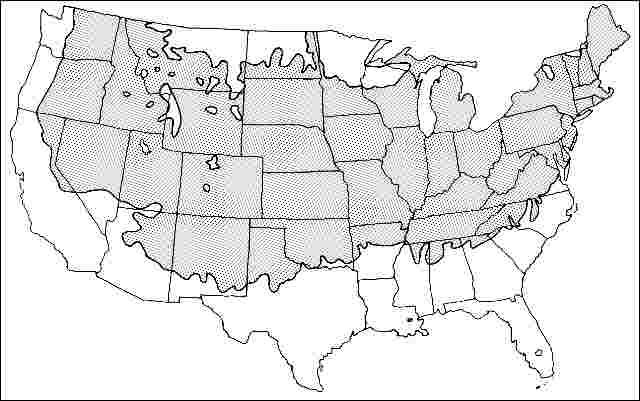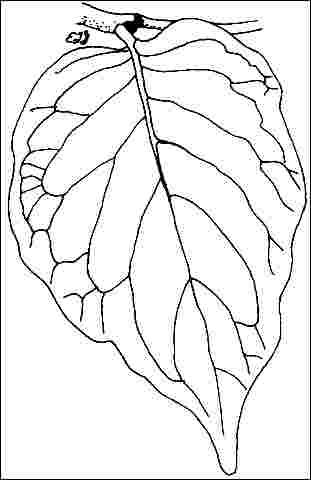Introduction
Although a lilac, this member of the species is quite different in appearance than those with which gardeners are more familiar. Its upright habit varies from symmetrical to irregular. Cultivars including 'Ivory Silk' and 'Summer Snow' could be used instead of the species due to the more consistent habit and more flowers. This is a very large shrub or small tree, reaching a height of about 20 to 30 feet with a 15-foot-spread. The huge clusters of creamy white flowers, borne in early summer for about two weeks, are the main ornamental feature but lack the fragrance of the spring-blooming lilacs—this lilac's fragrance is more suggestive of privet. It is being used as a street tree in some parts of the country, particularly in areas with overhead power lines. Japanese tree lilac is also popular as a garden specimen or as an accent in a shrub border. It deserves to be in any landscape. It provides shade and a colorful spring show for a deck or patio area. Green fruit clusters are somewhat showy when viewed from close range.

General Information
Scientific name: Syringa reticulata
Pronunciation: sih-RING-guh reh-tick-yoo-LAY-tuh
Common name(s): Japanese tree lilac
Family: Oleaceae
USDA hardiness zones: 4A through 7A (Fig. 2)
Origin: not native to North America
Invasive potential: little invasive potential
Uses: urban tolerant; screen; street without sidewalk; specimen; deck or patio; container or planter; trained as a standard; parking lot island < 100 sq ft; parking lot island 100-200 sq ft; parking lot island > 200 sq ft; sidewalk cutout (tree pit); tree lawn 3-4 feet wide; tree lawn 4-6 feet wide; tree lawn > 6 ft wide; highway median
Availability: somewhat available, may have to go out of the region to find the tree

Description
Height: 20 to 30 feet
Spread: 15 to 25 feet
Crown uniformity: irregular
Crown shape: upright/erect, round, vase
Crown density: dense
Growth rate: moderate
Texture: medium
Foliage
Leaf arrangement: opposite/subopposite (Fig. 3)
Leaf type: simple
Leaf margin: entire, undulate
Leaf shape: ovate
Leaf venation: pinnate, brachidodrome
Leaf type and persistence: deciduous
Leaf blade length: 2 to 4 inches, 4 to 8 inches
Leaf color: green
Fall color: no color change
Fall characteristic: not showy

Flower
Flower color: white/cream/gray
Flower characteristics: very showy
Fruit
Fruit shape: elongated, oval
Fruit length: .5 to 1 inch
Fruit covering: dry or hard
Fruit color: yellow, green
Fruit characteristics: does not attract wildlife; showy; fruit/leaves not a litter problem
Trunk and Branches
Trunk/bark/branches: branches droop; showy; typically multi-trunked; thorns
Pruning requirement: little required
Breakage: resistant
Current year twig color: brown
Current year twig thickness: thick
Wood specific gravity: unknown
Culture
Light requirement: full sun
Soil tolerances: sand; loam; clay; acidic; slightly alkaline; well-drained
Drought tolerance: moderate
Aerosol salt tolerance: high
Other
Roots: not a problem
Winter interest: yes
Outstanding tree: yes
Ozone sensitivity: unknown
Verticillium wilt susceptibility: susceptible
Pest resistance: resistant to pests/diseases
Use and Management
The tree is sold as a multi-stemmed specimen or as a single-trunked street tree. The trunk can be trained to grow fairly straight to 10 feet and then branches into a stiff, upright, rounded head of foliage. The bark is somewhat showy with prominent lenticels, being reminiscent of black cherry. As with other lilacs, the plant as a shrub may need rejuvenation by pruning every few years as it becomes overgrown. It is perhaps the most pest-resistant lilac, but that does not mean it is pest-free. Regular irrigation during dry spells help make this a pest-resistant tree.
Japanese tree lilac is tolerant of urban conditions, growing in poor, clay, or alkaline soil. The gorgeous flowers are most showy and prolific when the tree is located in full sun with good drainage. Plants in partial shade can be infected with powdery mildew which can cause some defoliation.
Available cultivars include: 'Ivory Silk'—grows in USDA hardiness zones 3 to 6, upright oval, nice flowers, borne in alternate years; 'Summer Snow'—grows in USDA hardiness zones 3 to 6, upright, round shape, persistent seed pods.
Pests
If properly located on an appropriate site, there are few problems.
Lilac borer larvae tunnel in the branches, causing wilting, particularly on drought-stressed trees. Severely infested branches may break off. Remove and destroy infested stems. Keep plants healthy with regular waterings during dry weather and by fertilizing.
Lilac leaf miner tunnels in the leaves in early summer. After mining the leaf, the caterpillars emerge and web leaves together and skeletonize the foliage. Light infestation can be controlled by hand picking.
Scales are most often found infesting the lower stems and often blend in with the bark. Inspect unhealthy-looking plants for scale infestations. Spray with horticultural oil to control overwintering stages.
Diseases
It is usually free of serious disease.
Bacterial blight is most serious on white flowered selections. The young shoots develop black stripes or one side of the shoot turns black. Spots develop on the leaves, forming a water-soaked blotch. Young leaves turn black and die quickly. On older shoots, the spots enlarge more slowly. The flowers wilt and darken. The disease is worse when wet weather occurs as the new shoots are developing. Thin the crown to increase air circulation. Remove and destroy diseased shoots and avoid excessive nitrogen fertilizer.
Phytophthora blight kills stems to the ground. The leaves turn black and shoots have brown lesions on them.
Leaf blotch causes zoned, brown spots. The infected area drops out, leaving a hole in the leaf.
Many fungi cause leaf spots.
Powdery mildew coats the leaves with white powder. During wet weather, lilacs mildew easily. Mildew is especially severe on shade-grown plants. Ignore late season infections.
Verticillium wilt causes wilting and premature leaf drop. The disease may kill one, several or all the branches. Try fertilizing regularly to help prevent diseases.
Bacterial crown gall causes round, warty galls on the stems near the soil line. Remove infected plants and do not replant with a sensitive tree in the same spot.